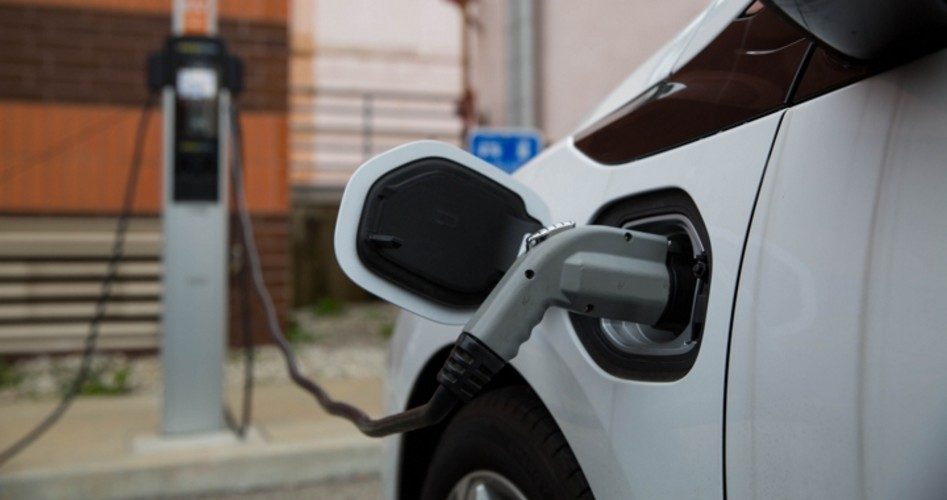
Chris Watling, the CEO of Longview Economics, told CNBC on Friday that Saudi Arabia should hasten the sale of part of its Aramco oil company while the price of crude is still high: “I think they need to get it away quick before oil goes to $10 [per barrel].” Added Watling: “We forget, don’t we? 120 years ago the world didn’t live on oil. Oil hasn’t always driven the global economy. The point is, alternative energy in some form is gathering speed.… Things are changing.”
Watling’s views coincide with those of Bloomberg New Energy Finance (BNEF) in their just-released 2017 Long Term Electric Vehicle Outlook, which concluded that by 2040 — less than one generation from now — more than half of all new car sales in the world will be electric vehicles (EVs), and a third of the world’s total car fleet will be EVs.
BNEF’s forecast is that EVs will be price competitive with internal combustion (IC) vehicles, on a non-subsidized basis, in less than seven years, and that by 2030 the “tipping point” will have been reached, after which adoption of the new technology will be complete.
Everett Rogers’ bell curve shows how EVs are already penetrating the IC vehicle market: Innovators (two percent of the car-buying population) tiptoe into the EV market followed by “early adopters” (13 percent). They are followed by the “early majority” (34 percent) and then, once EV technology becomes commonplace, the “late majority” and the “laggards” bring up the rear. BNEF thinks the tipping point is just a few years away and the “laggards” will be driving EVs no later than 2050.
BNEF looked at five factors in making its case:
• “Regulatory support” — i.e., governmental incentives and mandates drawing and pushing purchasers to buy EVs;
• Falling prices and improved power of lithium-ion batteries — bringing the moment when EVs are price-competitive with ICs ever closer;
• More EVs being offered by the major carmakers as they seek to avoid being left behind in the EV revolution;
• Growing consumer acceptance of the new technology — the gathering momentum of the “early adopters”; and
• The increasing role of car-sharing, ride-hailing, and autonomous driving.
BNEF’s conclusion was revealing: “Fossil fuel demand will be displaced by the growing fleet of EVs. We project that [EVs] will displace up to 8 million barrels of transportation fuel per day.”
It’s helpful to remember that, thanks to another revolution — fracking — the price of crude declined from $125 a barrel in May of 2014 to under $30 a barrel in February of 2016. U.S. crude-oil production exploded from under 5 million barrels a day in 2010 to almost 10 million today. But it wasn’t until U.S. shale-oil production began to saturate the world market — a surplus estimated by experts to be between two and three million barrels per day — that prices started dropping. It took less than two years for that surplus to change completely the global energy equation.
France and the United Kingdom have already put in place mandates eliminating IC-powered vehicles from being sold starting in 2040, while China is pouring billions into EV development with its goal being the production and sale of seven million EVs annually by no later than 2025. India is on board as well, with its intention of pushing EVs exclusively for its citizens shortly. Scotland just announced that it would ban the sale of diesel and gasoline vehicles by 2032, beating France and the U.K. by eight years.
Royal Dutch Shell just purchased Europe’s largest maker of recharging stations, while also announcing that it would be installing rechargers in tens of thousands of its retail gasoline stations. British Petroleum isn’t far behind, announcing plans to do the same at their retail gasoline outlets.
A noted above, carmakers are getting on board. It is estimated that there will be no fewer than 65 new EV models for sale by 2022. Competition and technological improvements will increase that number, while reducing their prices in the future.
As Nick Cunningham wrote at oilprice.com, “EVs may be a rounding error in the auto market right now, but they represent an existential threat to the oil industry … a threat that’s looking increasingly inevitable.”
In other words, thanks to innovation and governmental “encouragement,” less than a generation from now internal combustion vehicles will be collectors’ items.
An Ivy League graduate and former investment advisor, Bob is a regular contributor to The New American magazine and blogs frequently at LightFromTheRight.com, primarily on economics and politics. He can be reached at [email protected].



